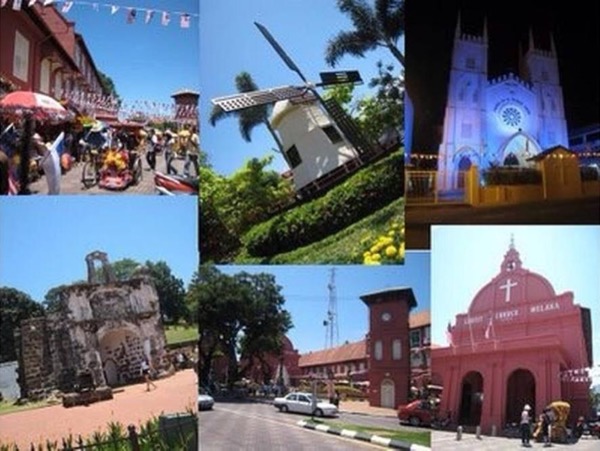The Malacca World Heritage Conference Links Tourism, Heritage and Culture in Malaysia – July 2011
World Heritage sites are iconic tourist attractions in most countries, experiencing similarly dynamic growth in tourism, from international and domestic markets. The overall mission of the sustainable tourism program is to aid the World Heritage Committee and the site management using tourism as a positive force to retain WH site values and to help mitigate site threats. The program engages the tourism industry to maximize tourism’s benefits and minimize its impact.
Chief Minister YAB Datuk Seri Ali Rustam of Melaka says:
“Global recognition of the country’s ability to protect our unique heritage will not only preserve Melaka’s rich heritage, but tourism and the service industries will bring economic benefits to the people.”
Conference Overview
Melaka World Heritage Site is proud to welcome delegates from around the world to the city, bringing together tourism and tourism planning experts in the fields of preservation of historical and archeological monuments, and scholars from various disciplines in tourism.
The conference will analyse the situation, success stories and experience gained in the utilization of World Heritage sites for tourism purposes and put this experience to good use in laying foundations for sustainable management plans.
Discussions will focus on models, theories as well as factual knowledge of protected historical centers, using examples from other World Heritage Sites.
The conference will examine the relationship between the conservation and management of urban heritage and the development of cultural tourism.
Delegates will study the mechanism and conditions in which tourism has become an important economic driver for the Heritage Sites.
Other key topics to be highlighted:
• Assessing, planning, preparing and marketing cultural heritage tourism. Successful stories of heritage tourism.
• Creating awareness among policy makers Heritage Sites are cultural assets which can be turned into a commodity.
• Building know-how on the ways to connect local initiatives with global networks and markets.
• Building the capacity of World Heritage sites to deal with tourism.
• Framework, guiding principles and steps for successful and sustainable cultural heritage tourism.
• Using World Heritage Sites as a lever for local economic, social and cultural development.
• Promoting the benefits of cultural and heritage tourism as a way to build audiences.
• Training of local community members in environment, cultural preservation and tourism related activities for tourism’s benefit.
• Lessons to be learnt from good and bad examples worldwide. Lessons will focus on how to develop and manage cultural heritage tourism.
• Meeting the challenge of increasing tourism through the promotion of authentic, unique cultural and heritage offerings.
• Creating a forum for fresh ideas and renewed vitality among cultural and heritage tourism professionals and the industry through networking, professional development and mentorship.
• Tourism + culture + heritage = sustainable economies.
• Building increased awareness of the objectives of the 1972 World Heritage Convention and other UNESCO conventions to the tourism programs, activities and policies for local and national public tourism authorities, industry officials and tourists.
Melaka & George Town, Historic Cities of the Straits of Malacca.
Melaka and George Town, historic cities of the Straits of Malacca have developed over 500 years of trading and cultural exchanges between East and West in the Straits of Malacca.
The influences of Asia of Asia and Europe have endowed the towns with a specific multicultural heritage that is both tangible and intangible.
With its government buildings, churches, squares and fortifications, Melaka demonstrates that early stages of this history originating in the 15th century Malay sultanate and the Portugese and Dutch periods beginning in the early 16th century.
Featuring residential and commercial buildings, George Town represents the British era from the end of the 18th century.
The two towns constitute a unique architectural and cultural townscape without parallel anywhere in East and Southeast Asia.
World Heritage Center
UNESCO
The venue is the beautiful country of Malaysia.
Email for more information:
leman@malaccaheritage2011.com
http://malaccaheritage2011.com/Malaccaheritage2011/Welcome.html
 April 1, 2011
April 1, 2011  Posted in: Malaysia
Posted in: Malaysia


No comments:
Post a Comment